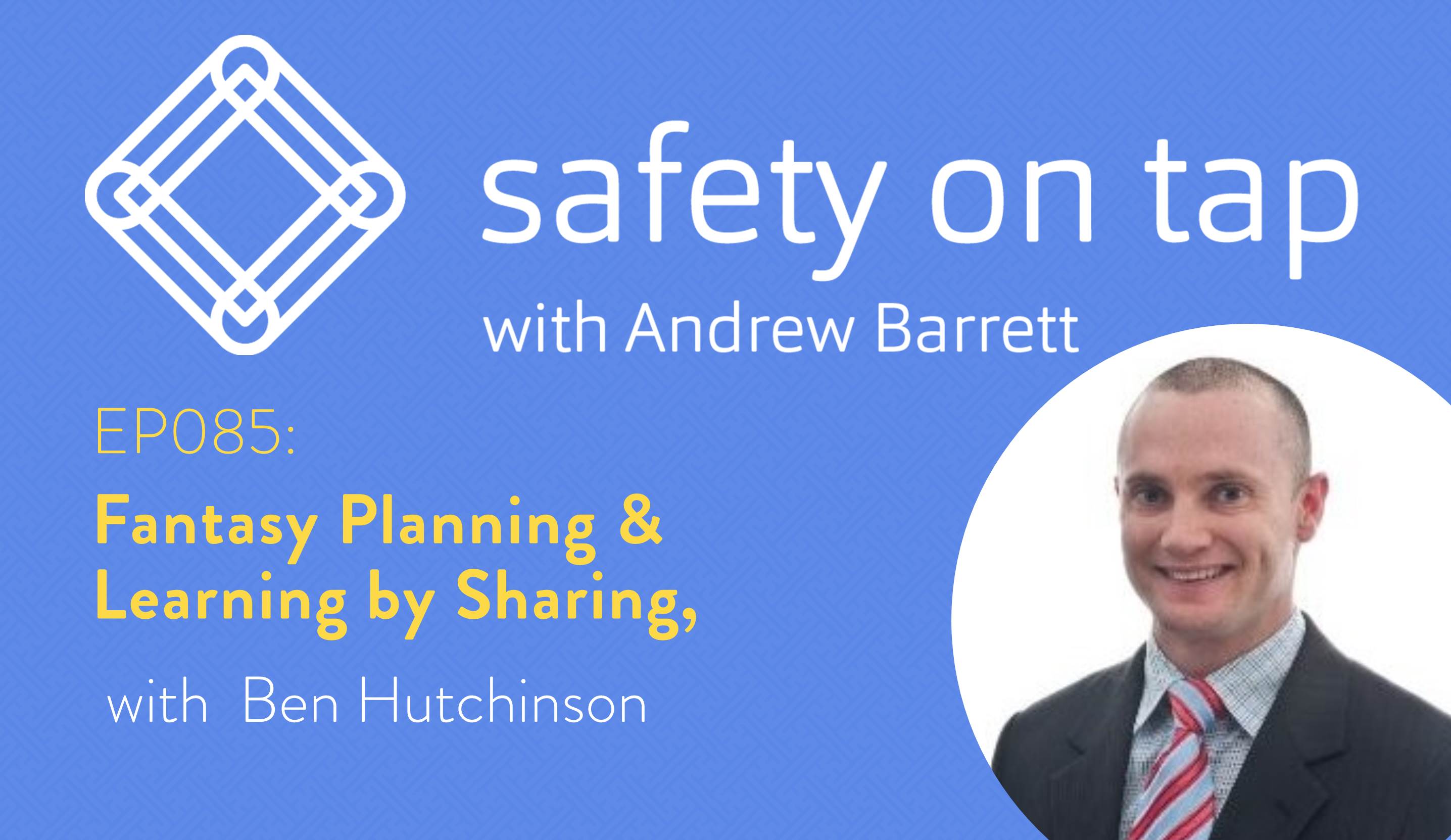Today I’m joined by Ben Hutchinson, a generous learner and teacher, a Ph.D. candidate and an all around great guy.
You know, you are pretty amazing. I know this based on one fact alone, and that is that you are listening because you are invested in your own development, your own growth. One of the biggest challenges to improvement that I observe in my work and general conversation with health and safety professionals is seemingly simple – taking action. We know what we might be able to do. We are often motivated. But action doesn’t follow. We are too busy, too distracted, too disjointed, or we simply don’t know why it is that we have great POTENTIAL which doesn’t turn into REALITY. I help people like you, and teams, to take action to improve, to become more effective – I do this in a variety of ways like coaching, team facilitation, learning teams, workshops and more. I am an action taker and can help you to be too. If you want to improve your personal or team performance, I’d love to hear from you to see if we are a good fit and can make good stuff happen together – head over to safetyontap.com and click the relevant button.
Let’s get into this episode, here’s Ben:
Isn’t fantasy planning just such a great word to get us squirming uncomfortably about this potential problem we create or at least might contribute to? It’s not a new concept but the language is new to me, which is what I love about this learning journey I am on, alongside you.
So, here’s my three takeaways from that chat with Ben Hutchinson:
Takeaway#1: Fantasy planning. Ben mentioned briefly that the fantasy things we create, the artifacts, aren’t all bad, they have a symbolic purpose. Check out the show notes, read Ben’s paper, and maybe you can start to reflect on and use some of that language in your organization. Does this have real, substantial, practical purpose, or is it symbolic? A client of mine recently was advised by someone else ‘they need to be seen to be compliant’, as I was taking them on a journey of decluttering and focussing their efforts. They were being reminded of the symbolic purpose of health and safety stuff, which is often distinct from a practical purpose. Have a read, have a think, and start to use this language for a conversation in your organization. Here’s Ben’s Paper.
Takeaway#2: Assumptions are necessary, important, and far too often unspoken or implicit. We all run on assumptions, but this isn’t often discussed in the context of health and safety. Sure, some risk assessment templates include an assumptions section…how detailed is this though? And remember that assumptions aren’t just about documents, it’s about decisions and communication too. Ben nailed this takeaway – watch out for, listen for, and start to surface assumptions around you. That will make for some enlightening learning.
Takeaway#3: The reason why Ben caught my attention, and what we started and finished on, was Ben’s generosity in sharing learning. I say learning, and not info because you can read the papers he reads, simply passing them on would be info. But Ben reflects, he summarises, he critiques and questions, and that’s what he shares. He is sharing his learning for the benefit of his Linkedin connections. Why not connect with Ben, check out his example, and maybe take his lead in sharing learning, rather than just info?
Until next time, what’s the one thing you’ll do to take positive, effective or rewarding action, to grow yourself, and drastically improve health and safety along the way? Seeya!
Here’s your FREE download of:
– my handwritten notes, PLUS a reflection template for you to use for this episode.
AND
– The full transcript of this episode.
I’ll also send you the links to all the available back-catalogue of reflection templates and transcripts so you can access these at any time.

